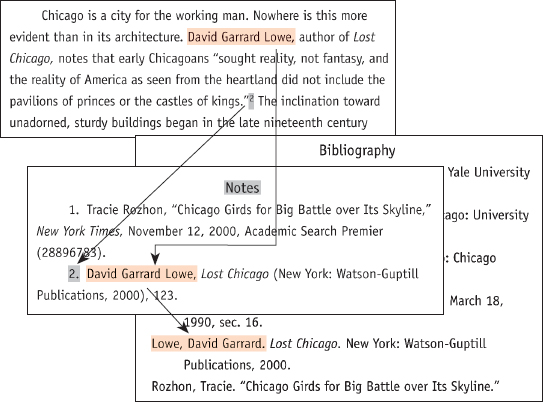34a Understanding the basics of {em}Chicago{/em} style
Why does academic work call for very careful citation practices when writing for the general public may not? The answer is that readers of academic work expect source citations for several reasons:
- Source citations demonstrate that you’ve done your homework on your topic and that you are a part of the conversation surrounding it.
- Source citations show that you understand the need to give credit when you make use of someone else’s intellectual property. (See Chapter 14.)
- Source citations give explicit directions to guide readers who want to look for themselves at the works you’re using.
Guidelines from The Chicago Manual of Style will tell you exactly what information to include in your citation and how to format that information.
 Types of sources
Types of sources
Look at the Directory to Chicago-style notes and bibliographic entries. You will need to be careful to tell your readers whether you read a print version or a digital version of a source that consists mainly of written words. Digital magazine and newspaper articles may include updates or corrections that the print version lacks; digital books may not number pages or screens the same way the print book does. If you are citing a source with media elements—
Articles from Web and database sources
You sneed a subscription to look through most databases, so individual researchers almost always gain access to articles in databases through the computer system of a school or public library that pays to subscribe. The easiest way to tell whether a source comes from a database, then, is that its information is not generally available free to anyone with an Internet connection. Many databases are digital collections of articles that originally appeared in edited print periodicals, ensuring that an authority has vouched for the accuracy of the information. Such sources may have more credibility than free material available on the Web.
 Parts of citations
Parts of citations
Citations in Chicago style will appear in three places in your text—
